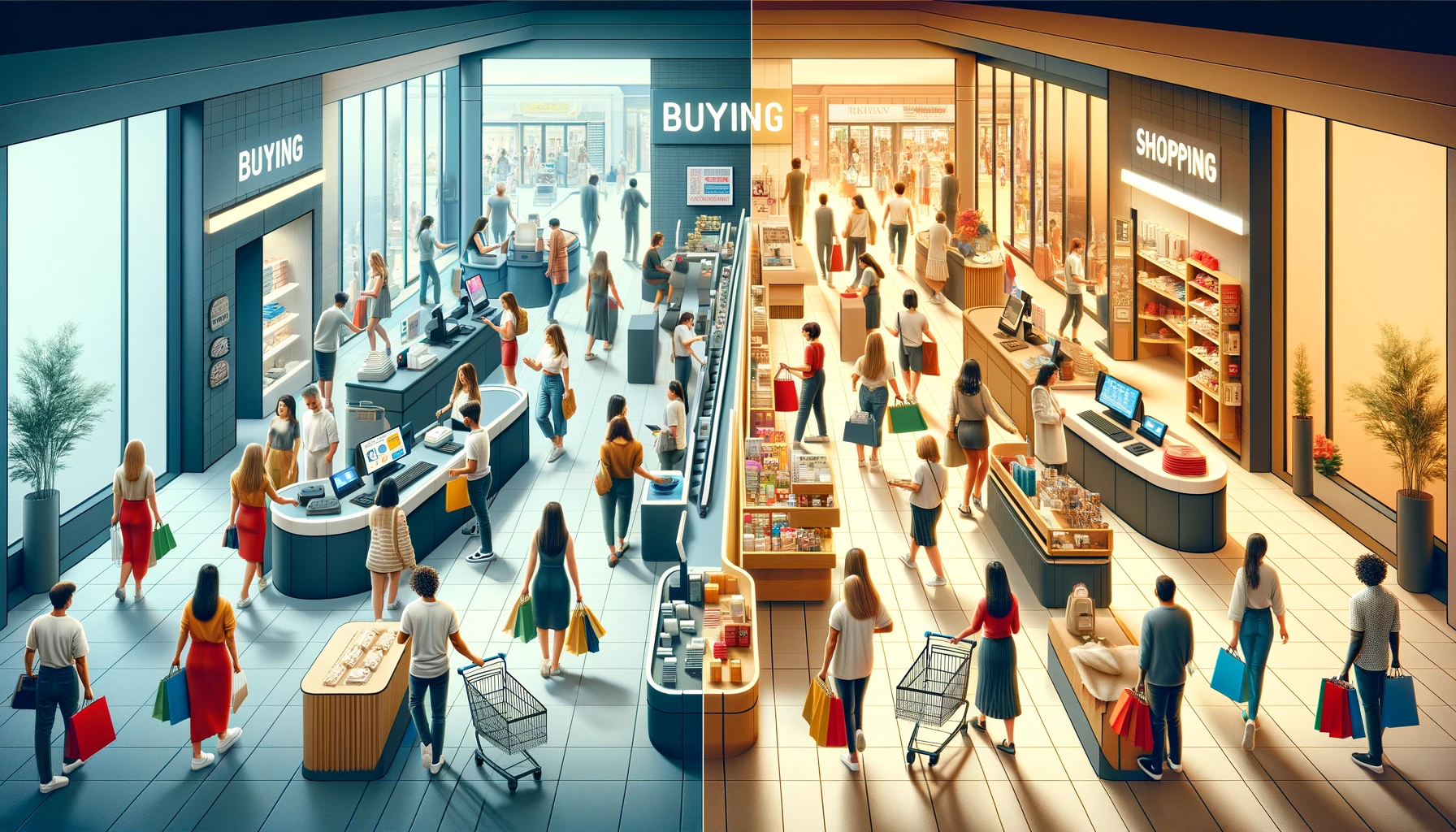While often used interchangeably, buying and shopping refer to two different aspects of the consumer experience, especially in the retail sector.
Understanding the references and context is crucial to sustainability in your business. As some retailers move away from cost-prohibitive malls to stand-alone locations, destination malls (Mall of America) are upping the game.
Consumer preferences and desires have evolved over the last 20 years, with the pandemic throwing gasoline onto traditional out-of-home experiences. People are more tech-savvy and enter a store or go online equipped with data, social media, and opinions gathered from those around them. Their expectations are different; consumers want new options. Consumers look to replicate in-store and restaurant experiences at home, causing some restaurants, like Tutta Bella in Seattle, to provide their signature products in grocery locations.
The differences open a discussion that bridges technical, emotional, and logical realms and profoundly affects budgets, loyalty, and market share. Here is my take on each.
Shopping
Shopping is typically an exploratory process. It involves researching, browsing, and comparing various products or services. It's about the experience and the journey of finding something, not necessarily the act of purchase. Journeys often have several stops (a quick-serve restaurant, some family staple) along the way. A diversity of choices, like those found in a mall or hypermarket, combining department and grocery (e.g., Walmart, Target Grocery), gives consumers more reason to stay in the store. The store becomes a routine destination.
Engagement with Products/Services: When shopping, consumers engage with different products or services, learning about their features, benefits, and prices.
Shopping only sometimes results in a purchase. It can be done for leisure, education (The Apple Store) information, or simply enjoying the experience with a complex emotional aspect. The phrase Retail therapy didn’t develop by accident; shopping can trigger profound internal reactions, especially for those isolated during the pandemic.
Over the years, as consumerism rose and shopping became more accessible and widespread, this term encapsulated the growing societal trend of finding comfort in material possessions. Over the years, it has been used humorously and as an indictment against consumerist tendencies in modern society.
Buying
Buying is a transactional process. It refers specifically to foreknowledge of what you want and making the purchase. Buying is often more practical and need-based. It focuses on the necessity of acquiring something rather than the experience of looking for it. Anecdotally, it has the highest conversion rate (presenting payment) and is less of an impulse purchase.
Buying is typically the conclusion of the shopping process – it’s the decision made after finding that one thing you can go into a store to acquire, possibly comparing and considering various options often subject to up and cross-selling.
What is the focus for 2024?
Omnichannel, omnichannel, omnichannel.
One would expect that purchasing habits would have moved by a majority to buying over shopping. Retailers quickly learned (with budgets they could not spend on traditional marketing) that isolated consumers with too much time on their hands began to use online resources and social media to make purchasing decisions. Consumers increased the amount of time on social media to 12.3% of their day. TikTok was the most downloaded free app in 2021, with Telegram coming in second. Influencers across the spectrum directed the shopping process while entertaining and influencing consumers, especially in the 18 – 35 demographic.
An immersive experience characterizes today's shopping. When consumers shop, it is very much destination-oriented, as I wrote last week (“The Destination is the Difference”).
Omnichannel and flexibility in the formats of your point of purchase are essential. Lower the friction to zero if your products and services contain a mix of staples and discretionary products. Offer those necessities in the easiest way possible.
Subscription buying has increased by 17.2% and is expected to accelerate. Cost-conscious consumers continue to take advantage of discounts for consumables (razors, toothbrushes) they use on a recurring basis. Retailers gain consistent and predictable revenue streams.
Entice consumers into retail locations with incentives and unique in-store experiences when they or you have a reason to do so.
Consumers empowered by technology seek products, stories, authenticity, and a connected experience. They are informed, tech-savvy, and value-conscious, often using omnichannel resources to tailor experiences to themselves. This aligns with 2023's trend, where shopping is about the joy of discovery and the pleasure of choice, transcending the mere act of purchase.
Food for thought
- How has your shopping behavior evolved in the digital era, and what role does technology play in your decision-making process?
- In your experience, what makes an in-store shopping experience memorable and engaging enough to draw you away from online convenience?
- When will you make the choices and what would be your tipping point?
This is deep topic and I’ll expand on it over the coming months.
Onward.

